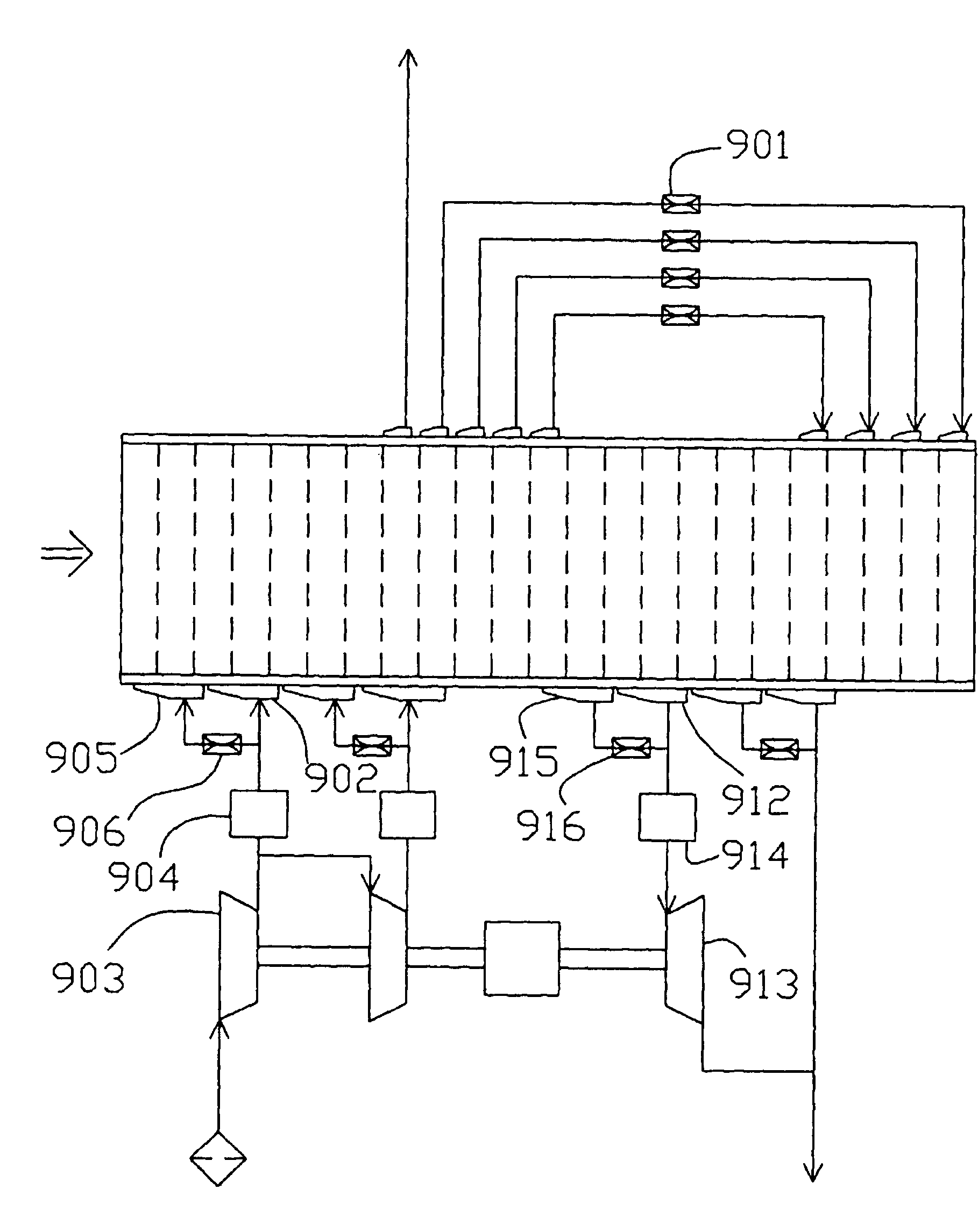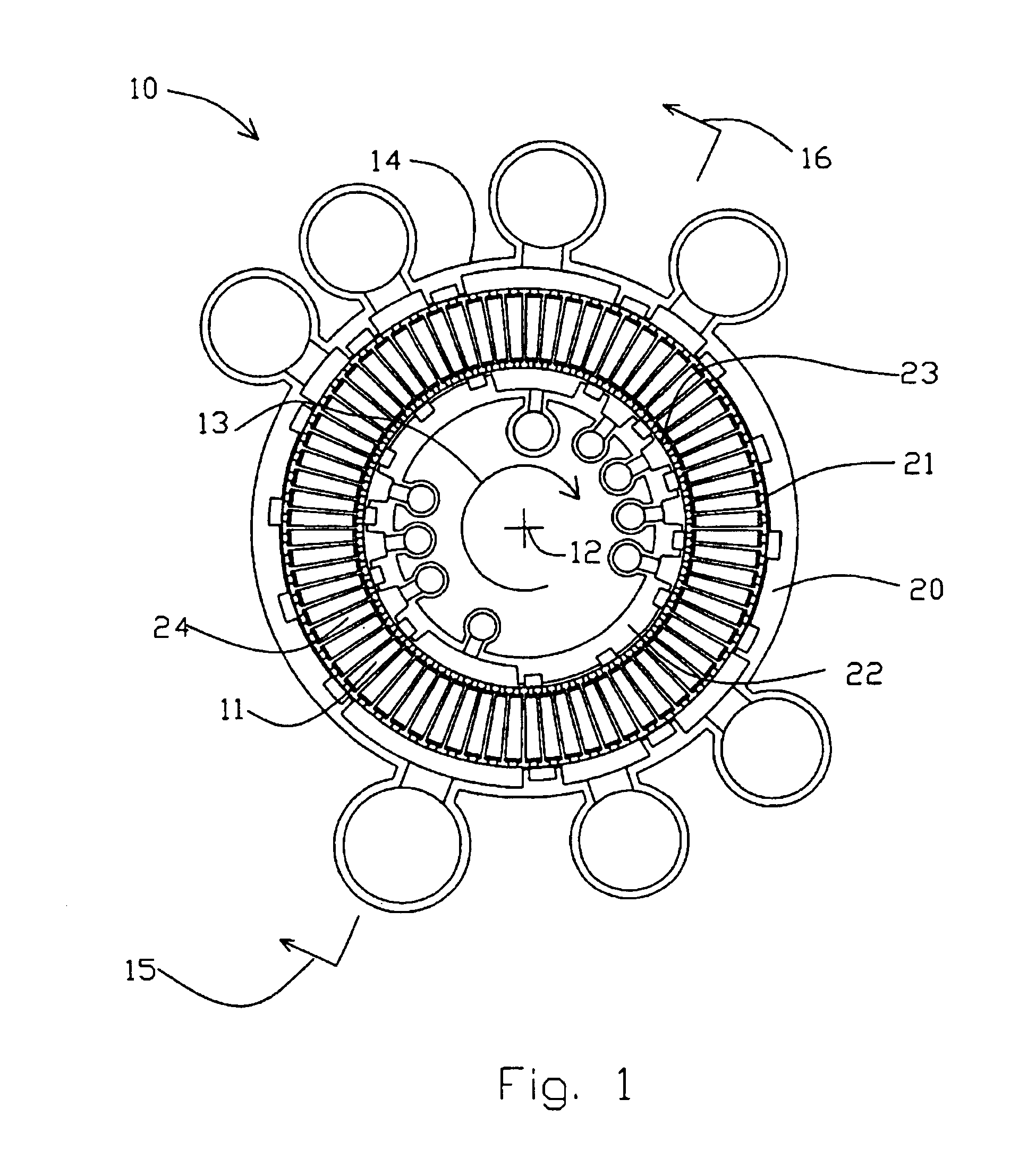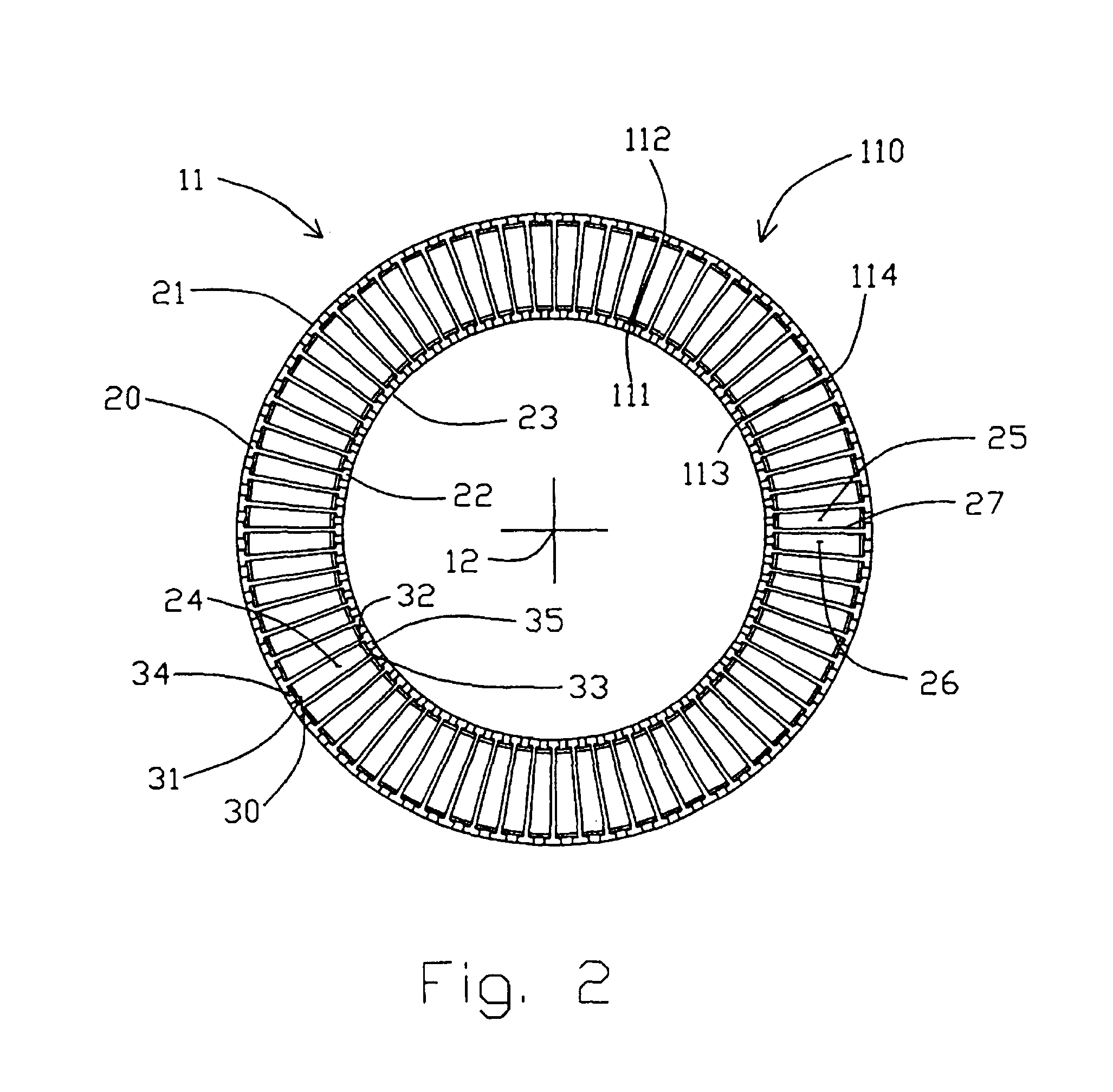Surge absorber flow regulation for modular pressure swing adsorption
a pressure swing adsorption and flow regulation technology, applied in the field of apparatus for separating gas fractions, can solve the problems of reducing the efficiency and yield of the gas separation process, rotary valves have considerable dead volume for flow distribution and collection, and the system is often difficult and expensive to implement, so as to reduce the dead volume of the adsorption. , the effect of contributing to the dead volume of the adsorption
- Summary
- Abstract
- Description
- Claims
- Application Information
AI Technical Summary
Benefits of technology
Problems solved by technology
Method used
Image
Examples
Embodiment Construction
FIGS. 1, 2, 3 and 4
A rotary module 10 according to the present invention is shown in FIGS. 1, 2, 3 and 4. The module includes a rotor 11 revolving about axis 12 in the direction shown by arrow 13 within stator 14. In general, the apparatus of the invention may be configured for flow through the adsorber elements in the radial, axial or oblique conical directions relative to the rotor axis. However, for operation at high cycle frequency, radial flow has the advantage that the centripetal acceleration will lie parallel to the flow path for most favorable stabilization of buoyancy-driven free convection, as well as centrifugal clamping of granular adsorbent with uniform flow distribution.
As shown in FIG. 2, the rotor 11 is of annular section, having concentrically to axis 12 an outer cylindrical wall 20 whose external surface is first valve surface 21, and an inner cylindrical wall 22 whose internal surface is second valve surface 23. The rotor has (in the plane of the section defined ...
PUM
| Property | Measurement | Unit |
|---|---|---|
| pressure | aaaaa | aaaaa |
| length | aaaaa | aaaaa |
| volume | aaaaa | aaaaa |
Abstract
Description
Claims
Application Information
 Login to View More
Login to View More - R&D
- Intellectual Property
- Life Sciences
- Materials
- Tech Scout
- Unparalleled Data Quality
- Higher Quality Content
- 60% Fewer Hallucinations
Browse by: Latest US Patents, China's latest patents, Technical Efficacy Thesaurus, Application Domain, Technology Topic, Popular Technical Reports.
© 2025 PatSnap. All rights reserved.Legal|Privacy policy|Modern Slavery Act Transparency Statement|Sitemap|About US| Contact US: help@patsnap.com



